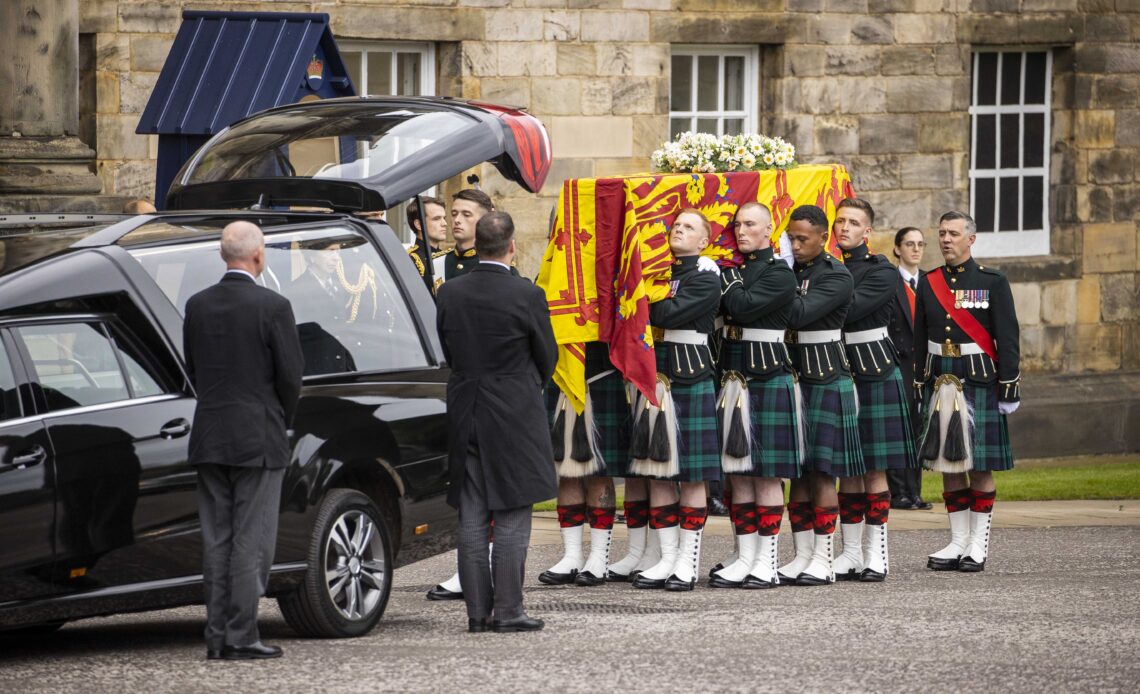
The public had known for decades that there was a very elaborate and specific plan in place dictating what would happen following Queen Elizabeth II’s death. However, because she passed while in Scotland, Operation Unicorn was put into place.
Operation Unicorn was the code name for the series of events that would occur in Scotland following The Queen’s death. The major element was Her Majesty’s Lying-In-State in Edinburgh.
The Queen’s children accompanied her body in a procession from the Palace of Holyroodhouse to St. Giles’ Cathedral, where there was a 24-hour lying-in-state. Over 33,000 members of the public queued to pay their respects to Her Majesty at St. Giles’.
King Charles, The Princess Royal, The Duke of York, and The Earl of Wessex performed the Vigil of the Princes while their mother’s body rested at St. Giles’. It was the first time that the tradition had occurred in Scotland (as King George V and King George VI both passed while in England) and the first time that a female member of the Royal Family had taken part.
Elizabeth had a strong relationship with Scotland, both as an individual and a monarch. Her mother was Scottish, and the Royal Family has spent much of their holiday time in Scotland since Queen Victoria’s reign.
The Queen’s relationship with Scotland as a working royal started early. She gave her first public speech as the future Queen in 1944 in Aberdeen. In the week following her 1953 coronation, Elizabeth and her husband attended a Service of Thanksgiving at St. Giles’. She continued to frequently visit Scotland for engagements throughout her reign, including significant visits for her Silver Jubilee in 1977, her Golden Jubilee in 2002, and her Diamond Jubilee in 2012.
In 2021 when speaking to the Scottish Parliament, she shared her long-standing affection for Scotland, saying, “It is the people that make a place, and there are few places where this is truer than Scotland.”
While The Queen made no public statements on the 2014 Scottish Referendum prior to the vote, she did urge the Scottish public to “think very carefully about the future.”
As seen by the large numbers of visitors to St. Giles’ Cathedral for her lying-in-state, Elizabeth was genuinely respected by the Scottish public and a loved monarch. However, many question whether or not another referendum for Scottish Independence would be defeated again, and if Scotland does choose independence, it is widely believed that the monarchy would be abolished in Scotland.
Queen Elizabeth may very well be the last Queen (regnant) of the Scots, but she enjoyed a close and strong relationship with her northern nation.

